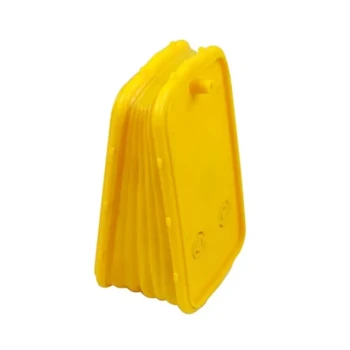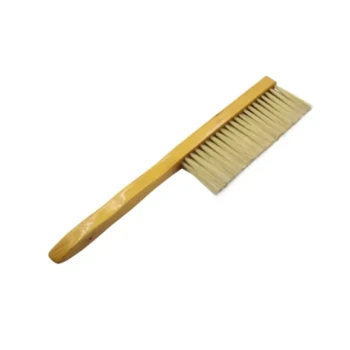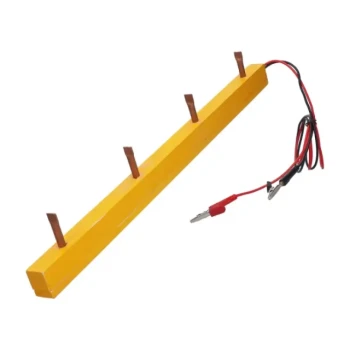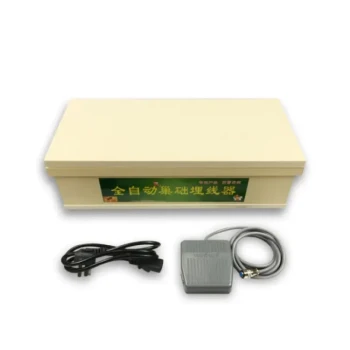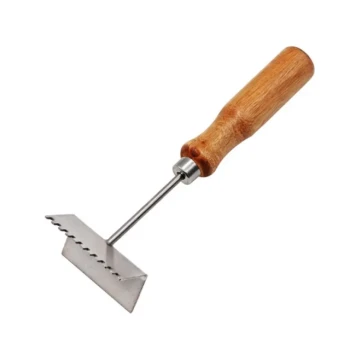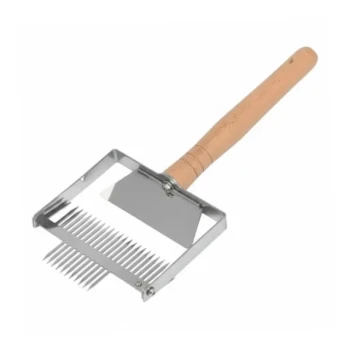In short, the best kindling for a beekeeping smoker is a two-part system. You need a fast-burning starter to create an initial flame, followed by a slower-burning main fuel to produce the actual smoke. Good starters include newspaper or paper egg cartons, while effective main fuels are materials like dry pine needles, wood pellets, or organic burlap.
The goal is not simply to create fire, but to produce a steady supply of cool, white smoke that is non-toxic to your bees. This is best achieved by layering a quick-to-ignite starter material beneath a dense, slow-smoldering primary fuel.
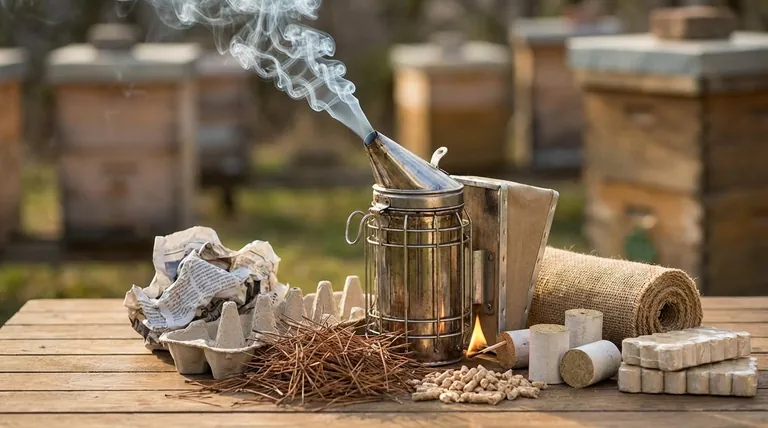
The Two-Stage Principle of Smoker Fuel
A common mistake is treating smoker fuel as a single material. A reliable and long-lasting smoker requires a strategic layering of two distinct types of fuel, each with a specific job.
Stage 1: The Starter (Ignition)
The starter's only purpose is to catch a spark easily and burn hot and fast. This initial heat is what ignites your main fuel source.
Materials like newspaper, paper egg cartons, or dryer lint from natural fibers are excellent for this. You only need a small amount to get a strong initial flame going.
Stage 2: The Main Fuel (Sustained Smoke)
This is the core material that will do the real work. The ideal main fuel doesn't flame; it smolders for a long time, releasing the cool, white smoke that calms bees without harming them.
Good examples include dry pine needles, untreated wood chips, specialty wood pellets, or rolls of organic burlap. This material is packed on top of the lit starter.
What Makes an Ideal Smoker Fuel?
Before grabbing materials from your yard, understand the three critical properties of a safe and effective smoker fuel.
It Must Be Completely Dry
Wet or damp fuel is difficult to light and produces steam instead of quality smoke. Always use materials that are bone-dry to ensure consistent performance.
It Must Be Natural and Untreated
This is the most important rule for the health of your bees. Never burn anything containing chemicals, glues, inks, or plastics. Fumes from these substances can be toxic to the colony.
Stick to raw, natural materials. If using burlap or cotton, ensure it is 100% organic and has not been treated with fire retardants or other chemicals.
It Should Smolder, Not Flame
A smoker that is actively on fire is too hot and produces aggressive, black smoke that can agitate or even harm bees. The goal is a gentle smolder that you can control with the bellows. A slow-burning fuel is key to achieving this.
Understanding the Trade-offs: Common Materials
Different fuels have distinct properties. Knowing them helps you adapt to what's available.
Pine Needles
Dried pine needles are a classic, readily available fuel. They are easy to light and smolder very well, producing a thick, pleasant smoke. Ensure they are completely brown and dry.
Wood Pellets (BBQ or Stove Pellets)
These are a fantastic option for a very long-lasting, consistent smoke. However, they are dense and can be difficult to light. They require a very hot and sustained starter flame to properly ignite.
Organic Burlap or Cotton
Strips of 100% natural burlap or cotton rags are a favorite among experienced beekeepers. They smolder exceptionally well and are slow to burn. The critical caveat is ensuring they are completely free of any synthetic fibers or chemical treatments.
Dryer Lint
Lint is an unparalleled fire starter that catches a spark instantly. However, you must only use lint from loads of 100% natural fibers like cotton, linen, or wool. Lint containing synthetics will melt into toxic plastic.
Making the Right Choice for Your Goal
Select your fuel combination based on your priorities and what you have available.
- If your primary focus is convenience and availability: Use a crumpled piece of newspaper as your starter and pack dried pine needles or grass clippings on top.
- If your primary focus is a long-lasting, consistent smoke: Use a commercial fire starter or tightly packed cotton dryer lint to ignite a full load of wood pellets.
- If your primary focus is using recycled materials: Use a section of a paper egg carton as a starter and add rolls of organic burlap or untreated cotton rags as your main fuel.
Mastering your smoker fuel is about ensuring the calm and safety of your bees, which is the foundation of successful beekeeping.
Summary Table:
| Goal | Recommended Starter | Recommended Main Fuel |
|---|---|---|
| Convenience & Availability | Crumpled Newspaper | Dry Pine Needles |
| Long-Lasting, Consistent Smoke | Commercial Fire Starter / Dryer Lint | Wood Pellets |
| Using Recycled Materials | Paper Egg Carton | Organic Burlap or Cotton Rags |
Achieve Perfect Hive Management with the Right Equipment.
Just as the right fuel is critical for your smoker, having reliable, high-quality beekeeping supplies is essential for the health of your apiary and the success of your season. HONESTBEE supplies commercial apiaries and beekeeping equipment distributors with the durable, wholesale-focused tools they need to operate efficiently and safely.
Let us help you equip your operation for success.
Contact our team today to discuss your wholesale supply needs and get a quote.
Visual Guide
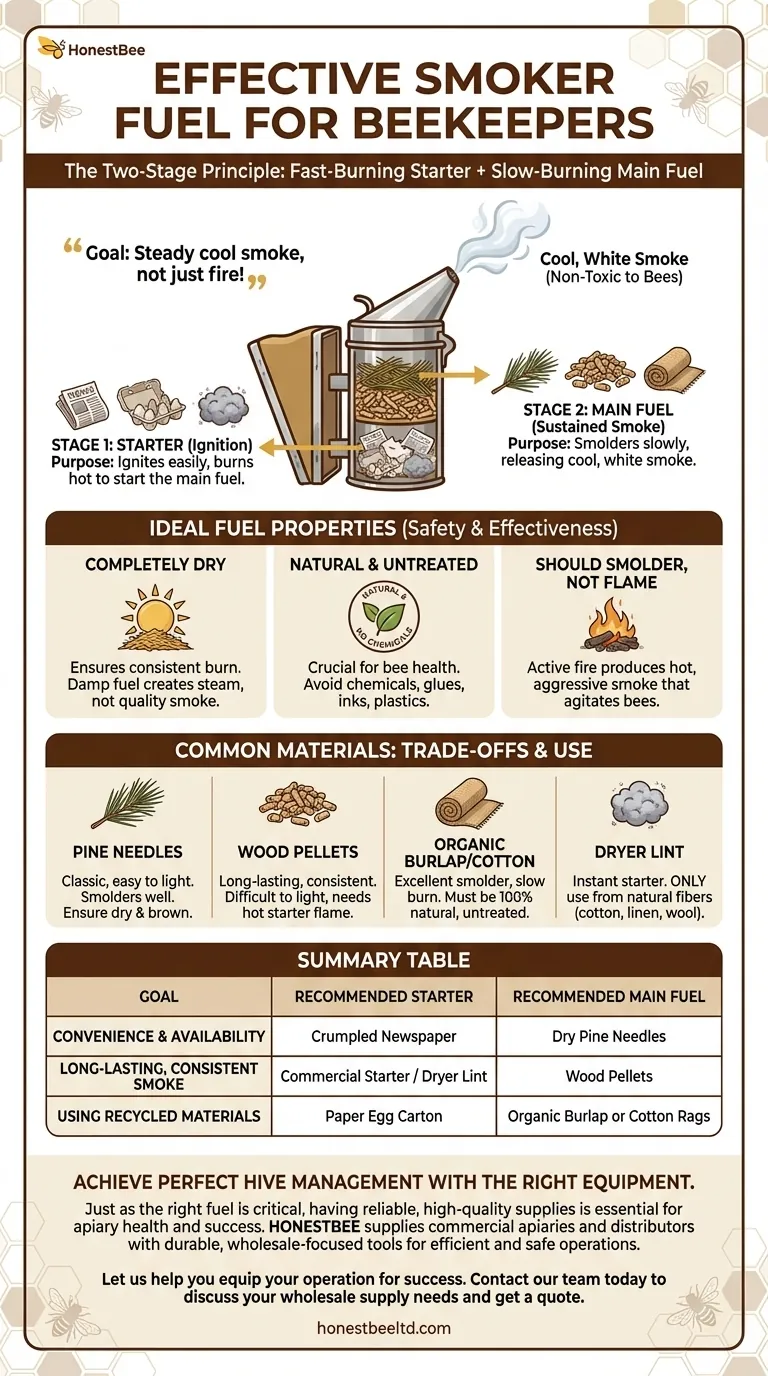
Related Products
- 54-Piece Smoker Fuel Pellets for Beekeeping Beehive Smoker Fuel
- Premium Traditional Copper Bee Smoker with Bellows
- Stainless Steel Honey Bee Smoker Hive and Honeycomb Smoker for Beekeeping
- Professional Replacement Bee Smoker Bellows for Beekeeping Equipment
- All-Weather Plastic Bellows for Bee Smokers
People Also Ask
- How should you start the fire in a bee smoker? A Step-by-Step Guide for a Calm Hive
- What is used in a bee smoker? Master the Best Fuels for Calm, Healthy Hives
- What fuels are recommended for beehive smokers? Master the Art of Calm, Controlled Inspections
- What to put in a bee hive smoker? A Guide to Natural, Calming Fuels
- What is the best material for a bee smoker? Choose the Right Fuel for a Calm Hive




